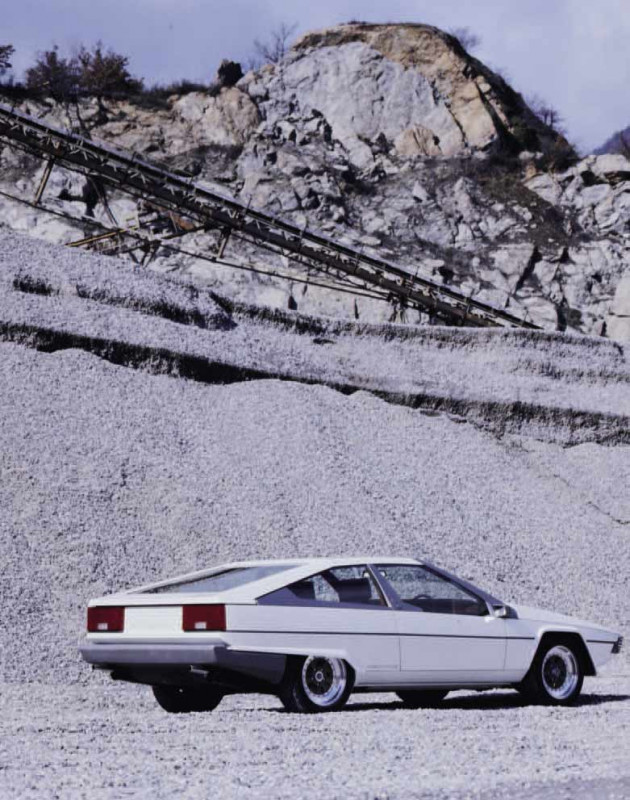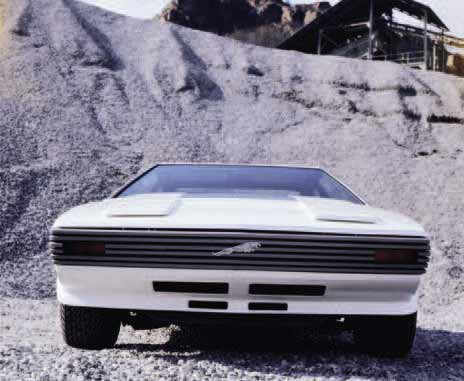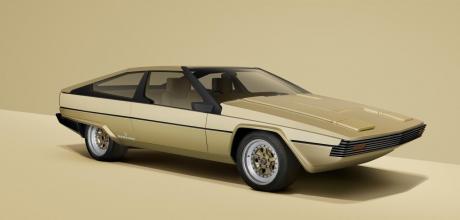On the fringe 1977 Bertone Jaguar Ascot
Scroll back to 1978 and Pininfarina caused a furore with its Jaguar XJ Spider. No gush was too purple as the world’s motoring media begged British Leyland to adopt it as a production model. It didn’t, of course, but this one-off roadster remains a classic of its kind. What tends to be forgotten is that arch-rival Stile Bertone also had a stab at reclothing an XJ-S. It’s just that the Piedmontese design house produced something diametrically opposed in looks; something that bit more brutal.
Bertone had form when it came to Giaguari Latini. It had previously reworked XKs, and also produced the short-lived FT coupé on S-type and 420 platforms for Italian marque concessionaire, Ferruccio Tarchini. Then there was the E-type-based Pirana, styling cues from which were subsequently transposed onto the Lamborghini Espada. This was something else entirely, though, the Ascot eschewing curves for angles, the mid- to late-1970s representing the zenith of the ‘origami’ styling fad, after all.

Bertone’s resident artiste Marcello Gandini had ushered in this movement, his Alfa Romeo Carabo from 1968 representing the jumping off point for the wedge look. Underpinning the Ascot was an XJ-S platform, the shorter overhangs front and rear ensuring the end product emerged 228mm shorter overall. The angular body was crafted from aluminium apart from the ribbed front end which Autocar helpfully described as comprising: ‘…an interesting metal/rubber sandwich material.’

It went on to describe the car as being akin to ‘an overgrown Lotus Eclat’ before describing Gandini’s thought process. It reported: ‘He sought to produce a low bonnet line by incorporating the high filter boxes beneath raised sections that lead to the retractable headlamp covers, and added an air-dam that follows through the projections atop the wheelarches. The result was something that is not only visually, but actually, lower than the original.’

Inside, the donor car’s instruments were carried over but inset within a full-width, box-like fascia. The seats were also unique to the Ascot, and there for decorative purposes according to CAR. It was strictly a 2+2, but with the added practicality of a rear hatch. The cabin was trimmed in a fetching shade of brown and tan which complemented the metallic gold exterior, one of the more curious touches being the leather satchel housed in the passenger-side door card.
The Ascot emerged at the 1977 Turin motor show and, unlike some of its concept car contemporaries which made like the mayfly, this one-off Jaguar became something of a regular on the automotive catwalks. It was repainted white along the way, and retained within the Stile Bertone factory collection in later years. It still exists. But despite the car’s obscurity relative to Pininfarina’s more exalted offering, it’s worth remembering that the Ascot was allegedly built with Jaguar’s blessing.

According to some sources, British Leyland’s former finance chief, Geoffrey Robinson, instigated the project. He had collaborated with Bertone and Gandini on the Innocenti Mini while tending to BL’s interests in Italy. On returning to the UK, the future MP became chief executive at Jaguar. He was reputedly keen to team up on a new project and the Ascot was the end product. That’s one version of history, but the timeline doesn’t fit.
Whatever the truth, there wouldn’t be another Bertone Jaguar for a further 25 years. It was worth the wait, even if the B99 (see Sheds Heaven, issue 4) was released at a time when this storied firm was heading for the embalming table.


